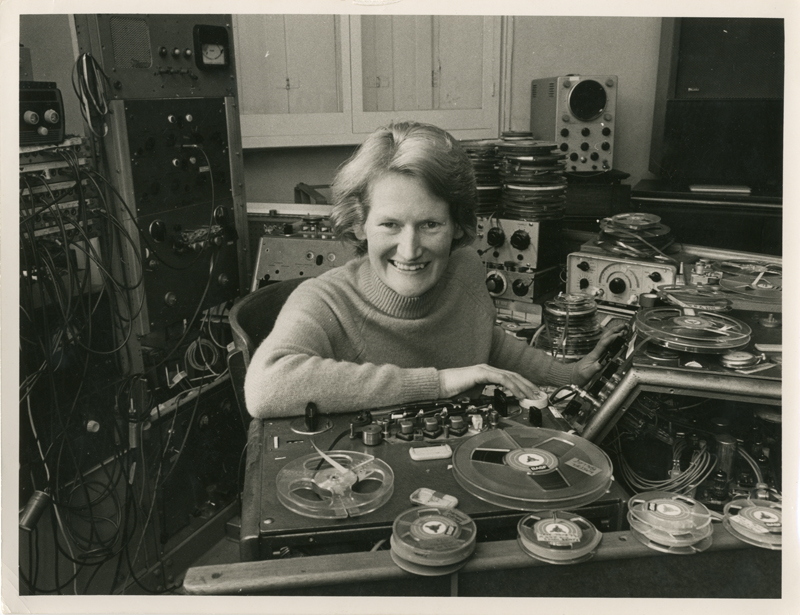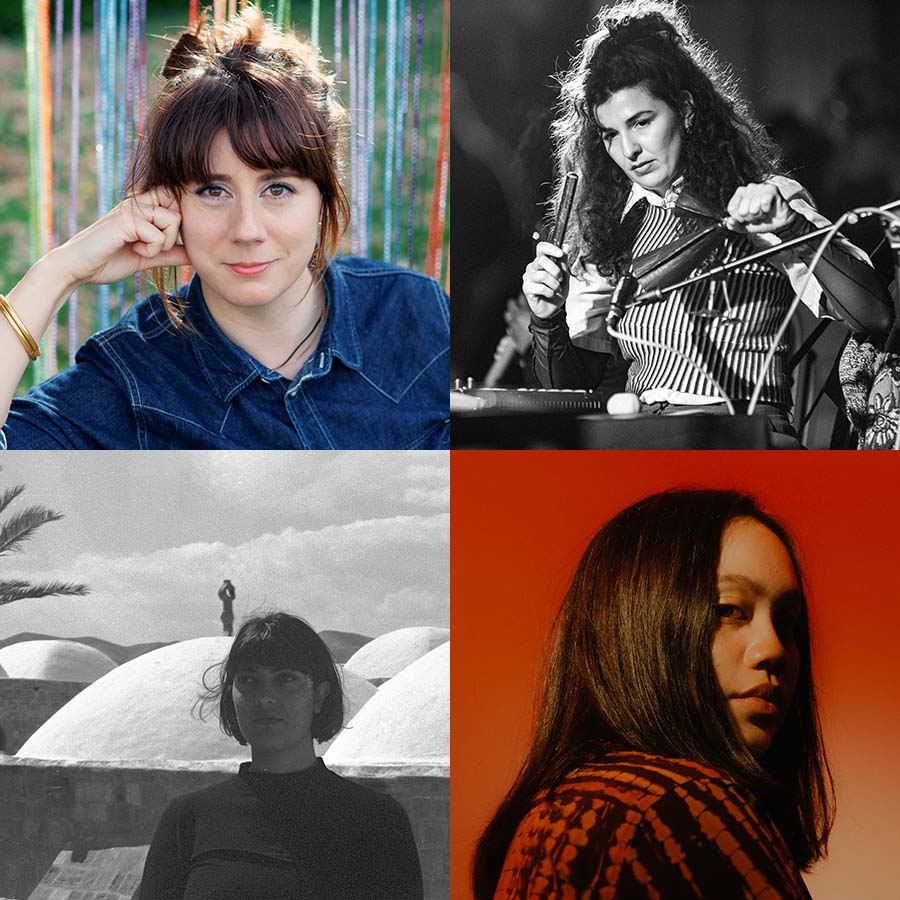There are few movements in music named after a single person; even fewer are named after women. In recognition of International Women's Day, we're taking a look back at the life of Daphne Oram, one of 20th-century music technology's most pioneering figures.
"I want machines, rather like computers, to be an extension of the arm of the composer," Oram says in the video above, an archived BBC documentary from 1969. Decades before the DAW and years before PCs would enter our homes, Oram envisaged a future where music-making would revolve around the use of a computer.
Born in 1925, Oram was a talented pianist and organ player as a child. Her professional career in music and recorded sound began during World War 2; in 1942, on leaving school, she turned down an offer of a place at the Royal College of Music in London to instead take up a role as a junior studio engineer at the BBC, where her responsibilities would include mixing live broadcasts and creating sound effects.
The BBC’s approach to sound and music was, at the time, as much a scientific pursuit as it was artistic. Like so many major broadcasters, the corporation valued precision and quality of sound as much as the more conventional musical aspects. In 1958, alongside her colleague Desmond Briscoe, Oram oversaw the creation of the Radiophonic Workshop at the BBC’s Maida Vale Studios, West London.
Essentially an experimental sound effect and soundtrack unit, the Workshop used new technologies, musique concrète techniques and tape manipulation to create soundtracks for BBC broadcasts including the popular sci-fi television series Quatermass and the Pit, and radio comedy The Goon Show. In later years, it would soundtrack Doctor Who.

Disappointed by the BBC’s reluctance to embrace new electronic music techniques, Oram resigned less than a year after the Radiophonic Workshop was formed. In 1959, Oram set up the Oramics Studios for Electronic Composition in Kent. It was here that she continued work on her Oramics technique, a unique approach based on the theory of using strips of 35mm photography film to control primitive electronic sound generators.
The film was fed through a machine which used light-dependent resistors to read control symbols painted onto the film. The Oramics machine effectively let the user sequence musical patterns, with control over variables like pitch, amplitude, timbre and reverberation (by sending the signal to speaker and mic in an echo chamber).
With the help of a 1962 grant of £3,500 from the Calouste Gulbenkian Foundation (over £75,000 in today’s money), Oram developed the Oramics machine alongside electronics engineers Graham Wrench and Fred Wood, plus her brother John. By 1966, the prototype machine was functional, albeit not perfect. Work continued to refine the idea, but the Oramics machine never took off as a commercially viable product.
Nevertheless, the Oramics machine was a huge technological achievement and an important part of Oram’s own compositions. What’s striking about it in retrospect is the way its horizontal strips of film appear so similar to aspects of modern music software. By envisaging a machine that brought together synthesis and composition, Oram paved the way for the modern DAW 25 years before it was invented.
The Oramics approach was decades ahead of its time in how it represented musical information visually. As part of the development of the Oramics approach, Oram also successfully patented what may well be the first digitally controlled oscillator, nearly two decades before such technology became commercially available via synths like the Roland Juno-6 and Korg Poly-61.
Oram died in 2003, aged 77, and interest in her work slowly grew over the following years. In 2011, the original Oramics machine went on display at London’s Science Museum, drawing more interest in Oram’s work.
Since then, Oram’s position as an influential figure in electronic music history has been widely acknowledged. In 2016, Goldsmiths PhD student Tom Richards created a working version of the Mini-Oramics machine Oram had planned to build in the early 1970s, keeping the legacy alive.
Oramics (2007)
This definitive compilation of Oram’s recorded works was first released by Paradigm Discs in 2007 and re-pressed on quadruple vinyl by Young Americans last year. The CD is available for purchase on Daphne Oram's Bandcamp page. As a starting point, try Bird of Parallax, composed in 1972 for Xallaparallax, a ballet performed at the Edinburgh Festival.
It opens with sounds of the Oramics machine before developing into the kind of rolling musique concrète groove which has led to Oram being hailed as an accidental pioneer of proto-techno, about a decade and a half before anyone in Detroit stumbled upon similar ideas.
The Oram Awards

Leading charitable funder of new music and talent development the PRS Foundation, in partnership with The New Radiophonic Workshop, launched The Oram Awards in 2017, seeking to support "the next generation of innovative women, girls and gender minorities in music and sound."
The awards are open to UK-based artists, with a focus on less established names, awarding prizes and bursaries to support the most original, forward-thinking work.
A new mentoring program is in development which will provide a platform to celebrate the cohort of winners past and present.
Last year's winning works include Cecilia “Cil” Morgan, aka afromerm’s motion-sensitive ‘Juniper’, with a MIDI instrument that reacts to movements, and Helen Anahita Wilson’s use of bioelectrical signal data from plants to tell stories about human health from a whole new perspective.
Elsewhere, the awards honour Natalie Roe’s unique blend of modular synthesis and acoustic experimentation as well as Hannan Jones’ take on musique concrète. Meanwhile London-based producer, composer, and vocalist Geo Aghinea is honoured for their work, which represents a musical landscape through the prism of a hearing aid.
The Oram Trust
Formed in 2007, the Oram Trust is a charitable organisation which seeks to “advance, improve, develop and maintain public education in” Oram’s work. Run by a board of volunteers including musicians, academics and members of Oram’s family, their work is vital in protecting Oram’s legacy. The trust’s website is an excellent starting point and resource for further information.







